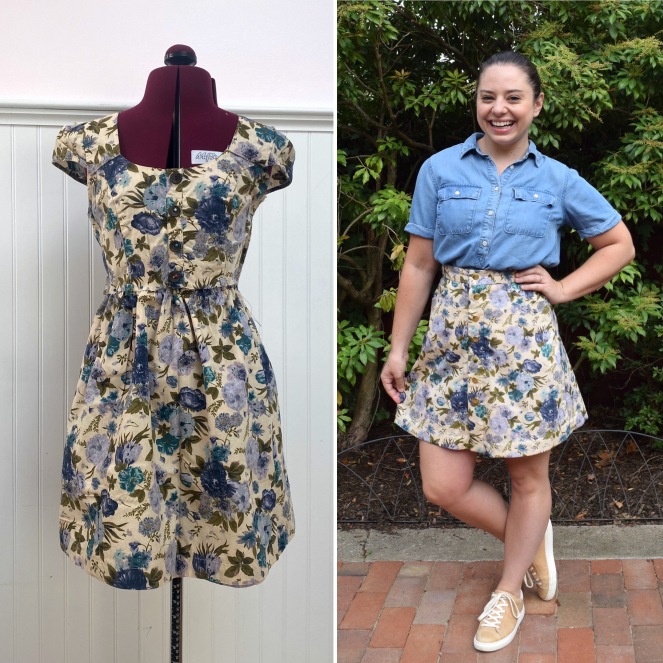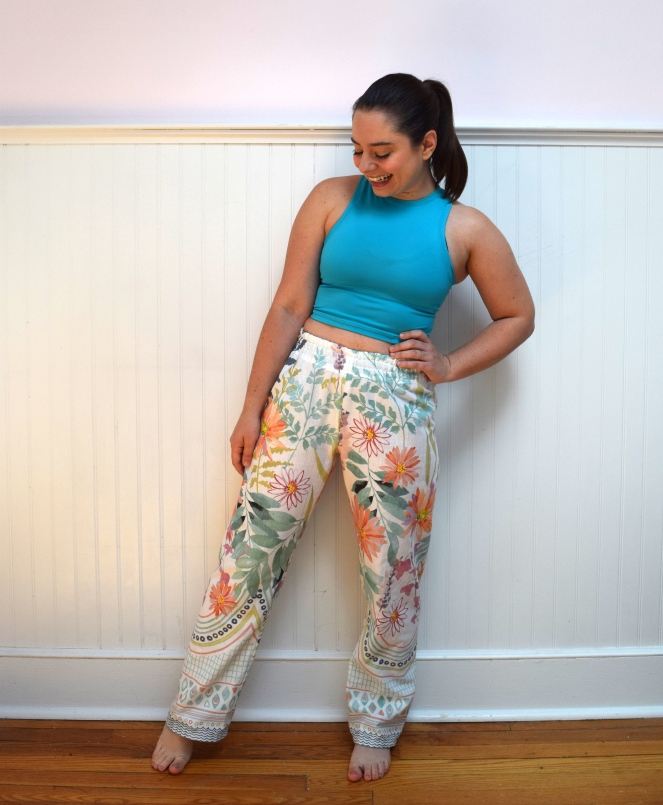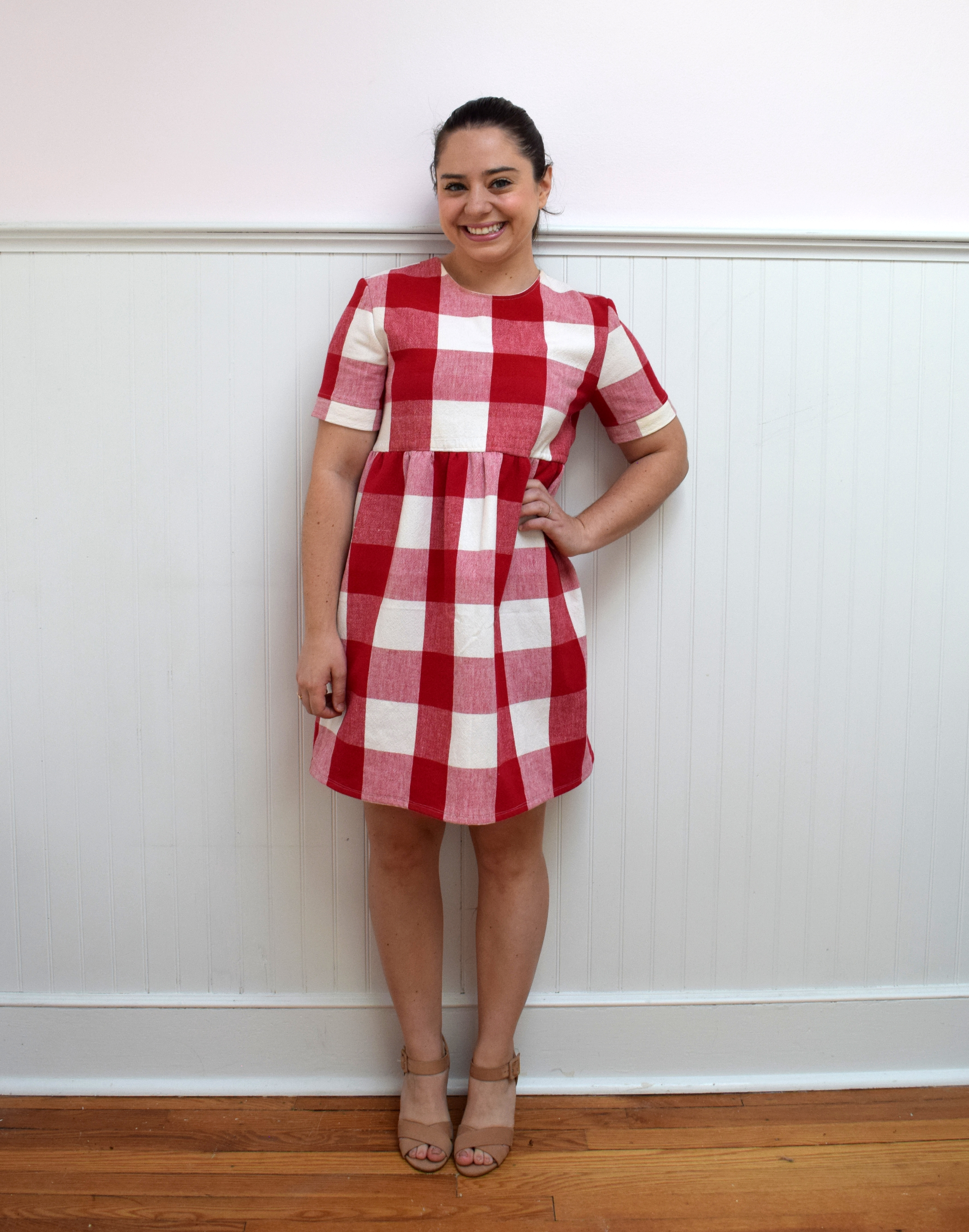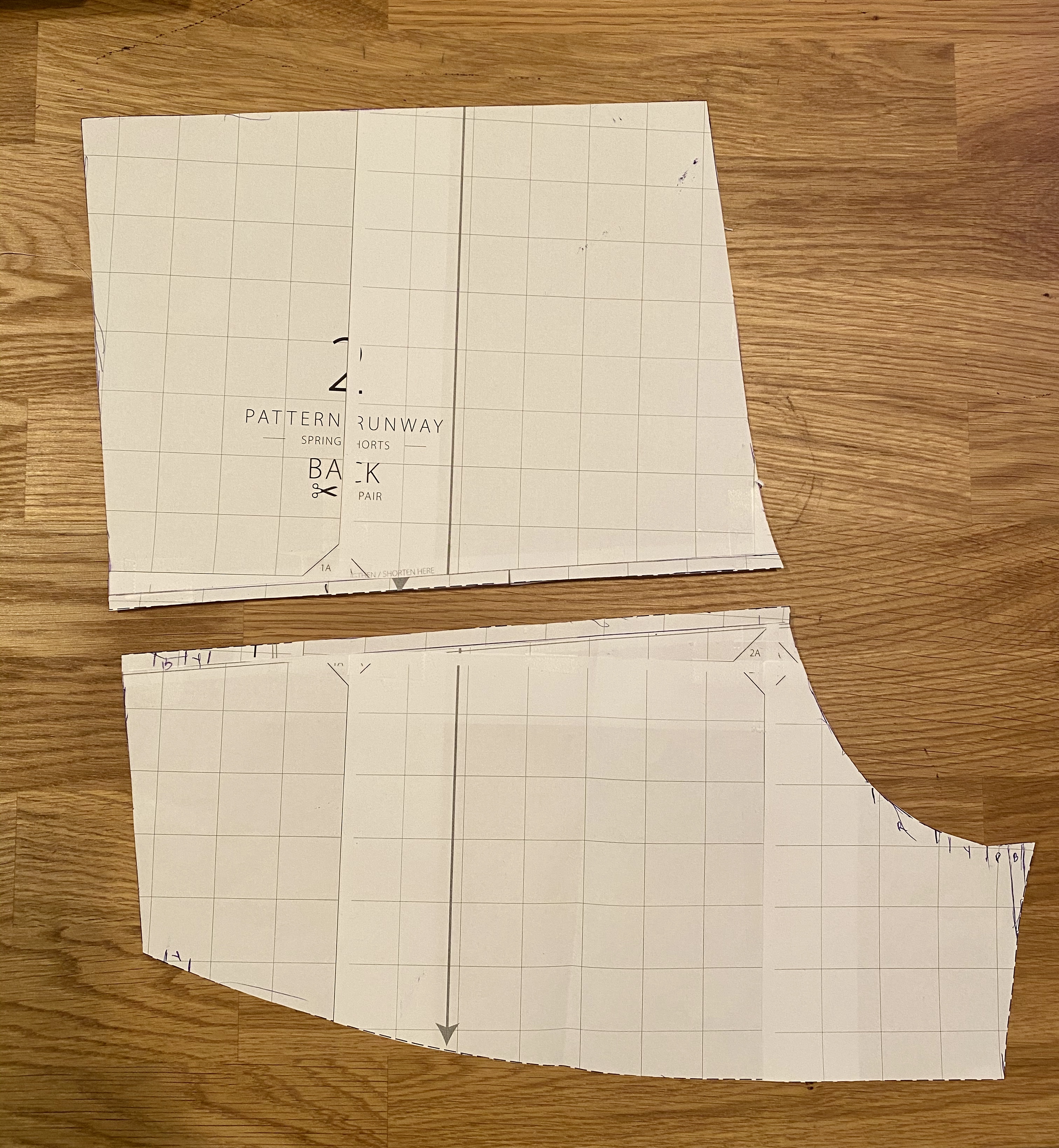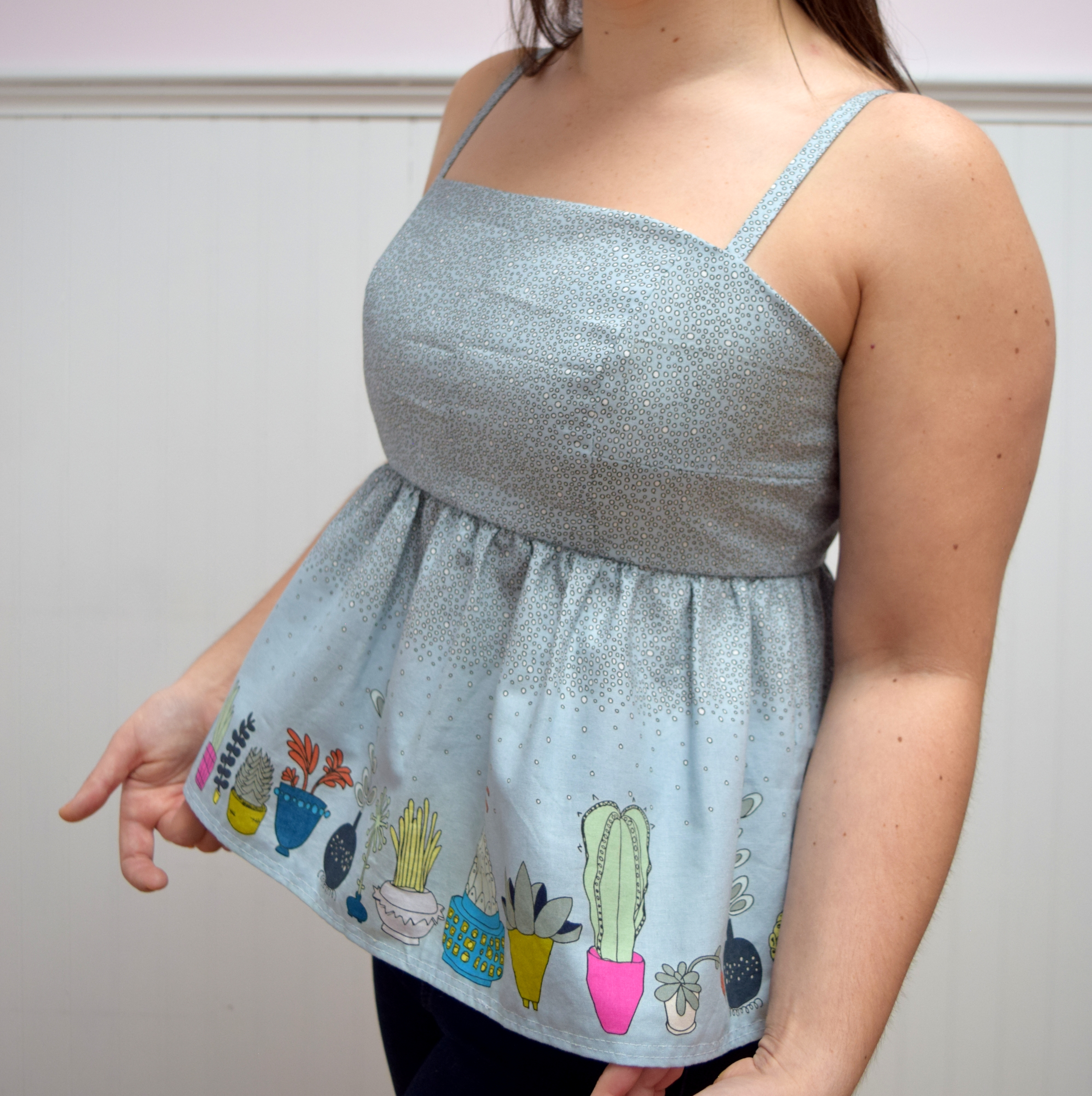As you can tell from reading my blog – I love fabric. But over the years I’ve been very conscious about where my fabric is coming from, and what I’m bringing into my stash. Yes I love refashioning, but I also love buying a gorgeous piece of fabric I don’t have to think about fitting a pattern on. Fabric buying can be very easy, and overwhelming; there are so many options out there – from cheap to very expensive. But the more you question content and the process of making it, fabric buying can get difficult.
This list is focusing on reclaimed, deadstock and vintage textiles. There are many shops that offer sustainably made fabrics, but I know how difficult it can be to find reclaimed materials and these are the sources I get asked about the most!

Here are some terms I look for and what they mean:
Reclaimed: The technical definition of “reclaim” is: “recover (waste material) for reuse; recycle.” (From Oxford Dictionary)
My definition in terms of fabric being reclaimed is: textiles that have been previously discarded and are being saved from landfill, burning or other forms of destruction. This can be leftover textiles from designers or fabric stores.
Recycled: There are a few definitions of Recycled Fabrics including: “textiles…sorted, graded and reused again to make fabrics for different end uses.” (Vivify Textiles) Such as, using plastic bottles to create new activewear textiles. (When fabric shopping, this term is more often used when describing newly made textiles)
For me, recycled fabrics can also refer to refashioning, or taking a pre-existing textile (clothing, sheet, curtain, etc) and transforming it into something new.
Deadstock: Technical definition: “an amount of a product that a company has bought or made but is unable to sell.” (Cambridge Dictionary.)
In textile terms, deadstock can also refer to leftover fabric that may have defects, and is typically sold off to smaller companies. (Deadstock can sometimes be destroyed through burning or be sent to landfill.) Deadstock is becoming a very popular term in fabric and clothing buying, and if you would to read more about Deadstock, check out this post from Virtue & Vice.
Vintage: Vintage is a generic term for fabric originating from a previous era.
Many people have their own definitions for how old something has to be, to be considered vintage. Usually it is fabric that is 20-30 years old and older. Materials usually become “antique” after 100 years. There is also fabric sold as Deadstock Vintage, another term to look out for when shopping.
Destash: “To remove yarn, fabric, equipment from one’s collection.” (Your Dictionary)
Destashing is very popular in the sewing world and there are many people who clean out their stashes online in hopes of re-homing their materials. Buying destashed fabric is a great way to get second-hand materials at a lower cost.
Thrifted: “Items bought at a thrift store, flea market, garage sale, or a shop of a charitable organization.” (Definitions.net)
This term can sometimes be used when shopping fabrics, but oftentimes it may fall under the reclaimed, deadstock or recycled label. This phrasing is typically up to the seller to use instead of those previously listed, but still a term to look out for.
And here’s the list!
Deadstock, Reclaimed, and Destashed Fabric:
Fab Scrap: (USA, NY) My #1 resource for reclaimed fabric. They work with designers to sell/recycle their excess or unusable materials to avoid textiles going to landfill. Located in New York, they have a warehouse where you can buy fabric by the pound and a shop in Manhattan which is a little more curated and fabric is bought by the yard. They also sell some stock and mixed boxes online and they have “insta-sales” on instagram. Fab Scrap also accepts remnants/scraps from sewers to recycle but it will cost $1.50/lb to recycle. (It then gets turned into shoddy, which is a product containing mixed recycled fibers, great for stuffing!)
Queen of Raw: (Global) A marketplace where vendors can sell their deadstock materials. A great place for purchasing large amounts of material for clothing lines, etc. They also offer fabrics in 3 yard minimums for smaller purchases. Located in New York but has sellers all over the world.
FabCycle: (Canada, Vancouver) FabCycle works with designers, factories and schools to collect unused textiles to avoid textile waste from entering landfills. This includes scraps, off cuts, deadstock and end of rolls. Shop online or visit their ReUse Center in Vancouver where they also take fabric donations! You can also shop FABCYCLE on Etsy!
A Thrifty Notion: (USA, KS) A shop that offers deadstock, vintage, and destashed fabrics! They take in a lot of donated materials that other sewers no longer want and sell online and in store. They also offer a “friday feature” of “new” materials in store. They also put together a fantastic Thrift Store Locator List featuring many “Re-use” shops, where you can donate materials and notions locally. A Thrifty Notion recently added ‘new stock’ eco friendly fabrics to their site. If you are looking specifically for vintage and destashed fabrics, be sure to read the fabric descriptions!
Stonemountain & Daughters Fabric: (USA, CA) Stonemountain is a fabric shop with an impressive collection of fabrics, and they have an online section exclusively for Deadstock Fabrics which are left over from garment factories and textile mills. While writing this, they even offer deadstock activewear fabric!
Measure: A Fabric Parlor: (USA, GA) Measure Fabrics offers mostly deadstock fabrics, which are available in limited quantities. I personally love Measure Fabrics and they often do fabric features on Instagram as well!
Swanson’s Fabrics: (USA, MA) Swanson’s Fabrics is a thrift store for fabric and crafting supplies. They offer upholstery, classes, and incredibly affordable fabrics. Everything is $4.00/yd, no matter what it is made of! (Thanks so much to Bridget for this resource!)
Scrap- Creative Reuse: (Portland OR, Arcata CA, Denton TX, Baltimore MD, Richmond VA, Ann Arbor MI) No online shop, but lucky locals can donate their items to Scrap who sells it to the public or donates to teachers or organizations that can use the items. Scrap can be a fantastic resource for fabrics and notions!
Who Gives a Scrap: (Colorado, USA) Who Gives a SCRAP is a donation based scrap store that carries a mix of arts and craft and hobbies supplies in addition to unique vintage finds. (Thanks so much to Bridget for this resource!)
Blackbird Fabrics: (Canada) Blackbird Fabrics is an online shop with a small collection of Designer Deadstock. Currently, the shop has some really beautiful deadstock printed fabric! Founder Caroline also co-hosts the Love To Sew Podcast!
Matchpoint Fabrics: (Canada) Matchpoint Fabrics is an online shop that offers mostly sustainable fabric options, but they also have a section of Deadstock Fabric. Most of the deadstock fabrics come directly from mills, TV/film sets & designers. (UPDATE: Matchpoint Fabric is currently closed, but you can sign up for their email list when they open again!)
Haines Collection: (UK)If you are looking for a place to buy upholstery fabrics, Haines Collection is the place! Fabrics in this online shop are leftover from designers and manufacturers in the interior industry. Most of these fabrics are high quality, and come with a higher price tag, but Haines Collection sells them at a much lower cost.
The New Craft House: (UK, East London) An online shop & studio filled with designer deadstock fabric. They are located in East London where you can also take a class, set up a private workshop or attend an event!
(Offset Warehouse: (UK) This shop is mainly focused on sustainable textiles, but says they also offer deadstock. There isn’t currently a specific section for deadstock, so you will have to look at each item, but I thought this would still be a good source to add. )
Vintage:
(Shops that have a passion for reducing waste in the textile industry with a love for vintage textiles)
Revival Fabrics: (USA, OR) An online shop featuring vintage fabrics from the 1920’s- 1970’s! This is a great spot for movie costume designers, commercial set stylists, and period re-enactors. They also have vintage pillowcases and sheets still in their packaging!
Olive Road London: (UK, London) A beautiful collection of vintage textiles, including dress fabrics and barkcloths. I love how this online shop allows you to browse by decades! (Olive Road London’s website doesn’t have US shipping but you can contact them directly for purchasing in US!)
Pink Peacock: (Australia) A beautifully curated online shop featuring vintage textiles. Beware, you may purchase more than just fabric here! (Seriously their vintage home wares are amazing!)
Retro Age Vintage Fabrics: (Australia) In business for 15 years, this is a huge resource for vintage fabrics and their online shop allows you to shop by era, content, design, color, or quantity.
Russian Retro Shop: (Latvia) Shop on Etsy featuring vintage fabrics! This shop has some really gorgeous prints!
Etsy Shops
Craft And Thrift Shop: (UK, Scotland) Amy runs an etsy shop filled with deadstock, thrifted and vintage fabrics. Fabrics are sold by the meter, but she also offers scrap packs and notions. (Amy has become a friend over on Instagram and I personally had a great experience sewing with fabric from her shop!)
Lyrical Fabrics: (USA, California) Lyrical Fabrics (previously named Sew Modern) is a sustainability-focused shop that specializes in deadstock fabrics. There is a mix of vintage, deadstock and natural fibers, so be sure to read the item description to find what you are looking for!
Etsy shops that offer mostly vintage fabrics but also sell destash fabrics, vintage sheets and/or sewing notions:
The Estate Stash: (USA, TN) (shop also sells fabric swatch books)
Ella Osix: (The Netherlands) (Incredible collection of vintage printed fabric)
Shop at the Little House: (USA, CA)
Found Fabrics Shop: (USA, OR)
Life in the Sass Lane: (USA, NY)
Lingon Berries and Moss: (USA, CO)
Dragonfly Cottage Shop: (USA, MN)
Lizi Rose: (USA, CA) (Destash denim scraps)
Bout Flowers: (UK, Durham)
Jaipur Design Shop: (India) (Shop sells beautiful vintage sari’s and recycled fabrics)
Instagram
@shopwellfibre (USA): Sells secondhand fabrics through instagram. (sewing account here! )
@suziesvintageshop (UK Only): Vintage textiles in her ebay shop – and see more behind the scenes on her other instagram account: Suzie Sharp Vintage!
@farmandtablefabrics: Sells through instagram! Posts sales of vintage and reclaimed textiles.
@shopmakethislook: Sells Vintage fabrics, often shown with inspiration garments! Auctions on Instagram. Follow her other account to see her beautiful makes: Make This Look
@vintagefabricsandsheets (Australia): Sells vintage fabrics and sheets on instagram!
If there’s a shop you don’t see listed that I should add, let me know! I will do my best to update this list.
(Please keep in mind, these are shops focused on selling reclaimed, deadstock, and vintage fabrics. Sustainable textile shops are also wonderful to purchase from but not included in this list. If you are looking for Sustainable shops, please read Halfmoon Atelier’s list!)
